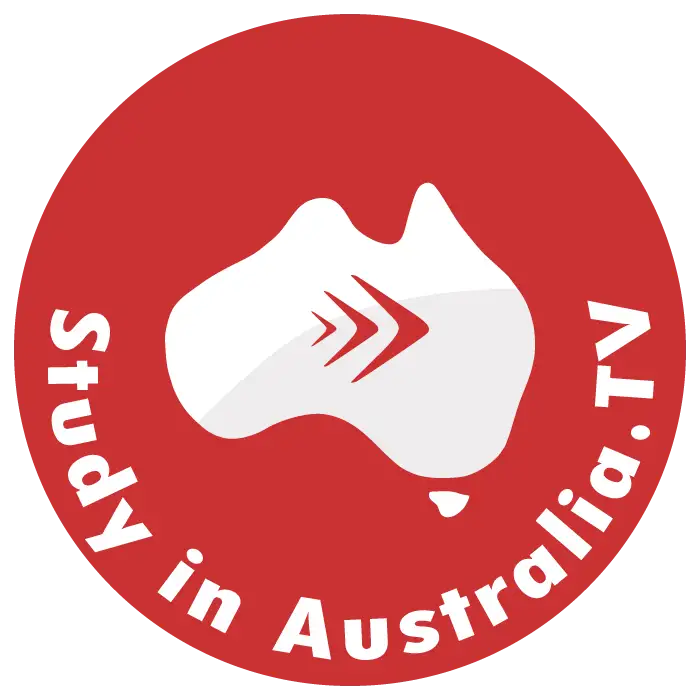The Journey to Becoming a Doctor in Australia: An In-Depth Guide
Embarking on the journey to become a doctor in Australia is both challenging and rewarding. This guide provides an in-depth look at the process, including the necessary education, training, and certification. Whether you're a high school student dreaming of a medical career or a professional looking to switch fields, understanding the path ahead is crucial.
Step 1: Undergraduate Studies
Choosing the Right Undergraduate Degree
While aspiring doctors in Australia do not need to major in a specific field, selecting a relevant undergraduate degree can provide a strong foundation for medical school. Popular choices include a Bachelor of Medical Science, Bachelor of Science, or Bachelor of Biomedicine. These programs typically cover subjects such as biology, chemistry, physics, and anatomy, offering a comprehensive understanding of the human body and health.
Academic Excellence and Extracurricular Activities
Maintaining a high Grade Point Average (GPA) is crucial for medical school admissions. Admissions committees look for candidates who have demonstrated academic excellence, particularly in science-related courses. However, grades are not the only factor considered. Engaging in extracurricular activities, such as volunteering at healthcare facilities, participating in research projects, and joining medical clubs or societies, can significantly strengthen your application.
Developing Essential Skills
Undergraduate studies are also a time to develop skills essential for a career in medicine. These include critical thinking, problem-solving, communication, and empathy. Participating in debates, public speaking events, or community service can help hone these skills.
Preparing for Medical School Entrance Exams
In Australia, the Undergraduate Medicine and Health Sciences Admission Test (UMAT) is required for those applying to undergraduate-entry medical programs, while the Graduate Medical School Admissions Test (GAMSAT) is for graduate-entry programs. Preparing for these exams is a critical part of the undergraduate journey. This preparation can involve self-study, tutoring, and taking practice exams to familiarize oneself with the format and content of the tests.
Gaining Relevant Experience
Work experience in a healthcare setting, whether through shadowing a doctor, volunteering, or working in a healthcare-related role, provides valuable insight into the medical profession. Such experiences not only strengthen medical school applications but also help confirm your commitment and passion for pursuing a career in medicine.
Seeking Guidance and Mentorship
Finally, seeking advice from academic advisors, medical students, or practicing physicians can provide guidance and mentorship throughout your undergraduate studies. They can offer insights into the medical school application process, share experiences, and provide support in making informed decisions about your career path.
Step 2: Entrance Exams and Medical School Admission
Understanding the Entrance Exams
In Australia, entrance to medical school requires passing either the Undergraduate Medicine and Health Sciences Admission Test (UMAT) for undergraduate-entry programs or the Graduate Medical School Admissions Test (GAMSAT) for postgraduate-entry programs.
-
UMAT: This test assesses general attributes and skills gained through prior education and experience, including critical thinking, problem-solving, understanding people, and abstract non-verbal reasoning. It's typically taken by students in their final year of secondary education or during their undergraduate degree.
-
GAMSAT: Designed for graduates, the GAMSAT evaluates the abilities to understand and analyze material, think critically, and write effectively. It covers three sections: Reasoning in Humanities and Social Sciences, Written Communication, and Reasoning in Biological and Physical Sciences.
Preparation for the Entrance Exams
Successful preparation for UMAT or GAMSAT often involves a combination of self-study, preparatory courses, and practice exams. Many candidates start preparing months in advance to familiarize themselves with the format and types of questions. Resources include textbooks, online courses, study groups, and past exam papers.
The Application Process
After achieving the required scores in UMAT or GAMSAT, candidates apply to medical schools through a centralized application system or directly to the universities. The application process typically includes submitting academic transcripts, entrance exam scores, a personal statement, and letters of recommendation.
The Interview Process
Most medical schools in Australia also require an interview as part of the admissions process. These interviews can take various formats, including panel interviews, multiple mini interviews (MMI), or semi-structured interviews. They assess candidates' communication skills, ethical reasoning, empathy, and suitability for a career in medicine.
Considerations for International Students
International students must meet additional requirements, such as proficiency in English (usually demonstrated through an IELTS or TOEFL score). They should also be aware of the specific quotas and admission criteria for international students at Australian medical schools.
Academic Record and Extracurricular Activities
Apart from the entrance exams, medical schools consider applicants' overall academic record, including their GPA and any post-secondary coursework. Extracurricular activities, particularly those demonstrating leadership, commitment to community service, and an understanding of the medical profession, are also important.
The Selection Process
Medical school admissions in Australia are highly competitive. Schools use a combination of UMAT/GAMSAT scores, academic performance, interview results, and other criteria to select candidates. Each medical school has its own specific selection criteria and weighting system.
Step 3: Medical School
Duration and Structure of Medical School
Medical school in Australia varies in length and structure, depending on the program. Undergraduate-entry programs typically last five to six years, while postgraduate-entry programs are usually four years. The curriculum is divided into two main phases: pre-clinical and clinical.
-
Pre-clinical Phase: The first part of the medical program focuses on basic medical sciences, including anatomy, physiology, biochemistry, pathology, and pharmacology. This phase provides a solid foundation in the scientific principles underlying medicine and usually includes laboratory work, lectures, and tutorials.
-
Clinical Phase: In the latter part of the program, students begin clinical rotations in hospitals and clinics. This hands-on training covers various medical specialties such as general medicine, surgery, pediatrics, obstetrics and gynecology, psychiatry, and general practice. Students gain practical experience in patient care, diagnosis, and treatment under the supervision of experienced physicians.
Learning Methods and Assessments
Medical education in Australia employs a mix of learning methods, including lectures, problem-based learning (PBL), workshops, simulations, and clinical placements. PBL, in particular, encourages students to work in groups to solve complex medical cases, fostering critical thinking and collaborative skills.
Assessments in medical school are varied and rigorous, including written exams, clinical examinations (OSCEs), assignments, and continuous assessment of performance during clinical rotations.
Research Opportunities
Many medical schools in Australia offer opportunities for students to engage in research. This can include summer research programs, elective research projects, or a dedicated research year for those interested in pursuing a career in academic medicine.
Professional Development and Extracurricular Activities
Medical schools also focus on the professional development of students. This includes training in communication skills, ethics, professionalism, and teamwork. Additionally, students are encouraged to participate in extracurricular activities like medical societies, community service, and leadership roles to further develop their skills and interests.
Global Health and Electives
Some medical programs offer global health electives, allowing students to gain experience in different healthcare settings, often in underserved or rural areas, both within Australia and internationally. These electives can provide valuable insights into diverse health systems and cultural competencies.
Transition to Internship
The final year of medical school often includes a "transition to practice" phase, where students assume greater responsibility in patient care, preparing them for their intern year. This includes more in-depth clinical rotations and may involve undertaking a "student intern" role, where they work closely with a medical team and assume some of the duties of an intern under supervision.
Step 4: Internship
The Role of the Internship Year
In Australia, the internship is a mandatory one-year period of supervised practice that medical graduates must complete to be eligible for full medical registration. It serves as a critical transition from medical school to independent practice, allowing interns to apply their knowledge in real-world settings and further develop their clinical skills.
Internship Structure
The internship consists of a series of rotations in different medical specialties, typically including:
- General Medicine: Interns gain experience in managing a wide range of medical conditions, developing skills in diagnosis, treatment planning, and patient care.
- Surgery: This rotation provides exposure to surgical procedures, pre-operative and post-operative care, and the management of surgical patients.
- Emergency Medicine: Working in emergency departments, interns learn to handle acute and urgent medical conditions, triage patients, and provide immediate care.
- General Practice or Community Health: Interns may spend time in a general practice or community health setting, focusing on primary care, chronic disease management, and preventive medicine.
Each rotation lasts for about 10 to 12 weeks, offering interns the opportunity to gain diverse clinical experiences.
Supervision and Support
Throughout their internship, medical graduates are closely supervised by senior doctors. Regular feedback and assessments ensure that interns are developing the necessary competencies. Many hospitals also provide educational support, such as workshops, seminars, and mentoring programs, to aid in the professional development of interns.
Assessment and Registration
Interns are assessed throughout the year on various competencies, including clinical skills, communication, professionalism, and ethical practice. Successful completion of the internship year is required to achieve general registration with the Medical Board of Australia. This involves meeting the Board’s standards and completing all required rotations satisfactorily.
Applying for Internship Positions
Internship positions in Australia are typically allocated through a centralized matching process. Medical graduates apply to state-based health departments, which then match candidates to available positions in hospitals. Preference is often given to Australian citizens and permanent residents, and competition for positions can be intense.
Challenges and Learning Opportunities
The internship year is both challenging and rewarding. Interns often work long hours and deal with the pressures of patient care in a fast-paced environment. However, it is also a time of significant professional growth, where interns learn to manage responsibilities, make critical decisions, and work effectively as part of a healthcare team.
Career Planning and Specialty Interests
During the internship, medical graduates begin to consider their career paths and areas of interest for future specialization. The experiences and insights gained during this year are valuable in guiding their decisions regarding residency and specialty training.
Step 5: Residency and Specialty Training
Understanding Residency
After completing the internship, medical graduates in Australia enter residency, a period of postgraduate training where they work as junior doctors in a specific medical field. Residency is an opportunity to gain further clinical experience and develop expertise in a chosen area of medicine.
Choosing a Specialty
Choosing a specialty is a significant decision for medical graduates. Australia offers a wide range of specialties, including but not limited to general practice, surgery, internal medicine, pediatrics, psychiatry, and emergency medicine. The choice often depends on personal interests, experiences during medical school and internship, and career goals.
Length of Residency Training
The duration of residency training varies depending on the specialty. General practice training typically takes three to four years, while other specialties like surgery or psychiatry can require five to seven years of training. Some highly specialized fields may require even longer training periods.
Training Program Structure
Residency programs are structured to provide comprehensive training in the chosen specialty. This includes supervised clinical practice, theoretical learning, and assessments. Residents rotate through various subspecialties and healthcare settings to gain a broad range of experiences.
Examinations and Assessments
Throughout residency, doctors undergo regular assessments to evaluate their progress and competencies. This includes practical exams, written tests, case presentations, and workplace-based assessments. Many specialties require passing rigorous examinations set by the respective specialist medical colleges in Australia.
Supervision and Mentorship
Residents work under the supervision of senior specialists who provide guidance, mentorship, and feedback. This supportive environment allows residents to gradually take on more responsibilities and develop their decision-making skills.
Research and Academic Opportunities
Many residency programs offer opportunities for research and academic involvement. Residents may participate in clinical trials, contribute to medical literature, or present at conferences. This engagement in research can be particularly important for those interested in academic medicine or highly specialized fields.
Work-Life Balance
Residency can be demanding, with long hours and significant responsibilities. Balancing professional commitments with personal life is an important aspect of this phase, and many hospitals and training programs offer resources to support residents' well-being.
Completion and Fellowship
Upon completing residency training and passing all required assessments, doctors are eligible for fellowship in their respective specialist college. Fellowship is a recognition of specialist qualification and expertise, allowing doctors to practice independently in their specialty.
Step 6: Registration and Licensing
Understanding Medical Registration
In Australia, medical registration is the process by which doctors are legally recognized and permitted to practice medicine. It is a crucial step in ensuring that medical practitioners meet the required standards of professionalism, competence, and ethical conduct.
Types of Registration
There are several types of medical registration in Australia:
- Provisional Registration: Granted to medical graduates during their internship year, allowing them to practice under supervision.
- General Registration: Awarded upon successful completion of the internship, enabling doctors to practice independently. This is the standard type of registration for most practicing doctors.
- Specialist Registration: For doctors who have completed their specialty training and obtained fellowship in a specialty college. It recognizes their expertise in a specific area of medicine.
The Medical Board of Australia
The Medical Board of Australia (MBA) is responsible for the registration and regulation of medical practitioners in Australia. The MBA ensures that doctors maintain high standards of medical practice and adhere to the principles of professional conduct and ethics.
Registration Requirements
To obtain general or specialist registration, doctors must:
- Complete the required training and examinations, including internship and residency programs.
- Demonstrate ongoing professional development and competence.
- Meet the MBA's standards for professional performance, including ethical behavior, communication skills, and patient care.
- Undergo a criminal history check.
- Provide proof of English language proficiency, if applicable.
The Registration Process
The registration process involves submitting an application to the MBA, along with supporting documents and evidence of meeting the registration standards. The MBA reviews applications to ensure that all requirements are met before granting registration.
Renewal and Continuing Professional Development
Medical registration in Australia is not permanent; it requires annual renewal. Doctors must demonstrate their commitment to ongoing professional development, participate in continuing medical education activities, and comply with the MBA's standards to maintain their registration.
Working in Different States and Territories
While medical registration is nationally recognized, doctors planning to work in different states or territories in Australia may need to notify or register with the local health authority.
International Medical Graduates
International medical graduates seeking to practice in Australia must meet specific requirements, including passing the Australian Medical Council (AMC) exams, completing a period of supervised practice, and fulfilling the MBA's registration standards.
Step 7: Continuing Professional Development
Importance of Continuing Professional Development (CPD)
Continuing Professional Development (CPD) is a vital aspect of a medical career in Australia. It ensures that doctors maintain, update, and enhance their knowledge and skills throughout their professional lives. CPD is essential for providing high-quality patient care and adapting to the rapidly evolving medical field.
CPD Requirements
In Australia, doctors are required to participate in CPD activities as part of their annual registration renewal with the Medical Board of Australia (MBA). The MBA sets guidelines for CPD, which typically involve a certain number of hours or points to be accumulated through various educational activities each year.
Types of CPD Activities
CPD activities can include a wide range of educational experiences, such as:
- Attending conferences, workshops, and seminars: These events provide opportunities to learn about the latest developments in medicine, network with peers, and discuss clinical cases.
- Participating in online courses and webinars: E-learning platforms offer flexible and accessible ways to stay updated with medical advancements.
- Engaging in research: Conducting or contributing to research enhances understanding of medical science and can lead to improvements in clinical practice.
- Peer review and quality improvement activities: Reviewing peers' work or participating in quality improvement initiatives helps maintain high standards in healthcare.
- Teaching and mentoring: Educating and mentoring medical students or junior doctors is a valuable way to share knowledge and experience.
Professional Development Plans
Doctors are encouraged to develop a personal CPD plan that aligns with their career goals, interests, and the needs of their patients. This plan should be regularly reviewed and updated to reflect changes in their professional practice and the broader healthcare environment.
Role of Specialist Medical Colleges
Specialist medical colleges in Australia often provide CPD programs and resources tailored to their specific fields. These colleges play a crucial role in guiding specialists in their ongoing education and professional development.
Documentation and Audit
Doctors must document their CPD activities and may be required to provide evidence of their participation during audits conducted by the MBA or their respective specialist college.
Impact on Career Advancement
Engaging in CPD not only meets regulatory requirements but also has a positive impact on career advancement. It demonstrates a commitment to lifelong learning and can open up opportunities for career progression, leadership roles, or specialization.
Adapting to Changes in Healthcare
CPD helps doctors adapt to changes in healthcare practices, technology, and patient needs. It ensures that they remain competent and capable of providing the best possible care in an ever-changing medical landscape.
Conclusion: A Rewarding Career
The path to becoming a doctor in Australia is a journey filled with challenges, learning, and immense personal and professional growth. From the initial steps of undergraduate studies to the continuous journey of professional development, each phase is crucial in shaping competent, compassionate, and skilled medical practitioners.
Integrating Approved Courses and Programs
A pivotal aspect of this journey is the selection of accredited courses and programs. The Australian Health Practitioner Regulation Agency (AHPRA) provides a comprehensive list of approved programs of study for medical practitioners. These programs, which can be found on the AHPRA website, are essential for ensuring that the education and training received meet the high standards required for medical practice in Australia. Aspiring doctors should consider these approved courses when planning their education, as they are designed to provide the necessary knowledge, skills, and competencies required in the medical field.
Embracing the Challenges and Rewards
Each step in becoming a doctor, from passing rigorous exams and completing demanding internships and residencies, to engaging in ongoing professional development, requires dedication and hard work. However, the rewards of a medical career are unparalleled. Doctors have the unique privilege of making a profound impact on individuals' lives, contributing to public health, and advancing medical science.
Adapting to an Evolving Field
Medicine is an ever-evolving field, and doctors in Australia must be prepared to adapt to new medical technologies, treatments, and understanding of diseases. The journey does not end with obtaining a medical degree or completing a residency. It is a lifelong commitment to learning and adapting in order to provide the best possible care to patients.
The Role of Continuous Learning
Continuous learning through CPD ensures that doctors remain at the forefront of medical advancements. By engaging in approved CPD activities, doctors can refine their skills, explore new areas of interest, and stay abreast of the latest developments in medical science and patient care.
A Career of Service and Impact
Ultimately, the journey to becoming a doctor in Australia is more than a career path; it is a commitment to a lifetime of service, learning, and impact. The challenges faced along the way are matched by the immense satisfaction of improving health outcomes, contributing to the wellbeing of communities, and being part of a respected and noble profession.
In conclusion, the journey to becoming a doctor in Australia, guided by the framework of AHPRA-approved courses and ongoing professional development, is a fulfilling and dynamic path. It offers the opportunity to make a significant difference in the lives of individuals and the broader community, marking it as one of the most rewarding professions.











